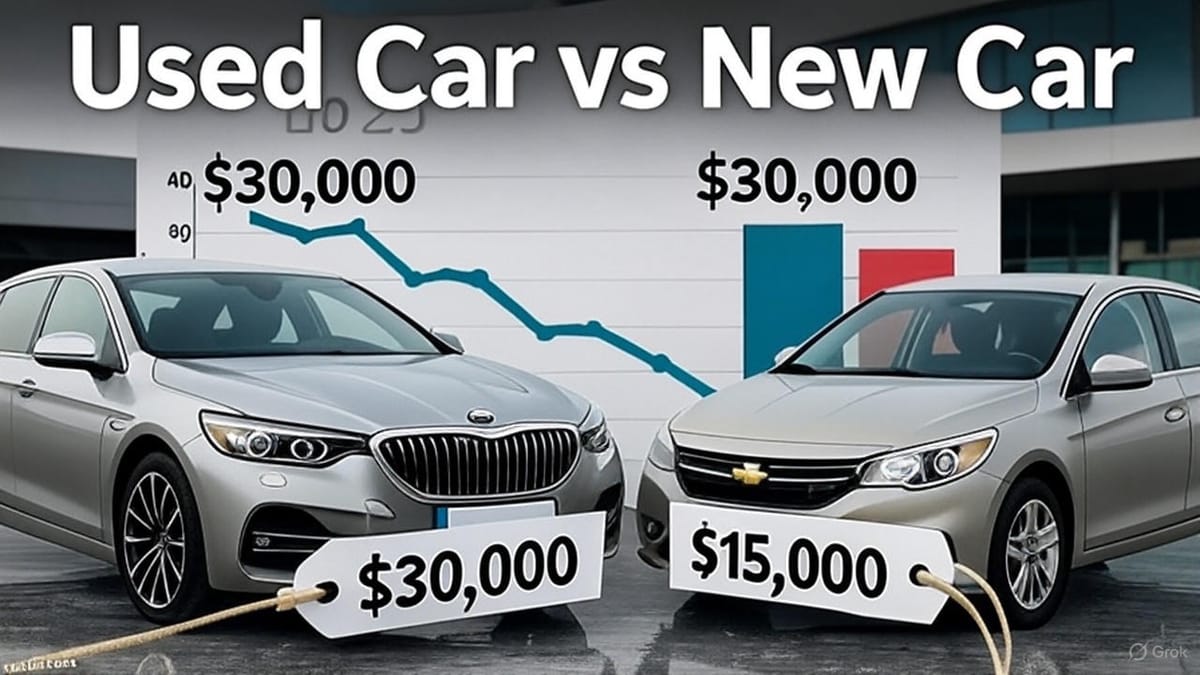Used Car vs New Car: Which is More Profitable and Better for Your Wallet in 2025?

Are you torn between splurging on a shiny new car or opting for a reliable used one? In 2025, with rising costs and economic uncertainties, choosing between a used car vs new car isn’t just about preference—it’s about profitability and long-term value. At UsedCarKnowHow.com, we specialize in helping you navigate the used car market, but we’ll break down the pros, cons, and facts fairly. Whether you’re prioritizing savings, features, or reliability, this guide will help you decide which option is truly better for you.
Understanding the Basics: Used Car vs New Car Overview
A new car rolls off the lot with the latest tech, zero miles, and that fresh factory smell. But it comes at a premium price. On the flip side, a used car—typically 3-5 years old—offers significant upfront savings but might require more due diligence. According to recent data, the average price for a new car in 2025 hovers around $48,841 [3], while used cars average about $25,571 [2]. That’s nearly a 50% difference right from the start!
But profitability isn’t just about the sticker price. Factors like depreciation, maintenance, insurance, and resale value play huge roles. Let’s dive deeper.
Cost Comparison: Upfront Savings with Used Cars
When it comes to initial costs, used cars win hands down. You can often snag a gently used vehicle with modern features for half the price of a new one. For example, a 3-year-old model might cost $31,216 on average [4], compared to a new equivalent pushing $48,000+.
• Pros of Used Cars: Lower purchase price means smaller loans and less interest paid over time. Plus, sales tax and registration fees are based on the vehicle’s value, so you’ll save there too [14].
• Pros of New Cars: Better financing rates (often 1-2% lower interest) and incentives like rebates can offset some costs [33].
• Cons: New cars are simply more expensive, and with inventory stabilizing in 2025, deals might not be as aggressive as in previous years [29].
If budget is your top concern, a used car is almost always more profitable upfront.
Depreciation: The Silent Killer for New Car Owners
Depreciation is where new cars lose big. A new vehicle can drop 15-20% in value the moment you drive it home, and another 15% each year after that [20]. By year five, it might retain only 40-50% of its original value [23].
Used cars? They’ve already taken that initial hit. A 3-year-old car depreciates much slower, often holding 60-70% of its value over the next few years [12]. This makes used cars more profitable if you plan to sell or trade in later— you’ll lose less money overall.
• Fastest Depreciating Cars in 2025: Luxury models like the Ford Mustang Mach-E lose up to 46% in five years [18].
• Slowest Depreciating: Hybrids like the Toyota RAV4 hold value best, dropping only 8-9% [25].
Bottom line: If profitability means minimizing losses, buy used and let someone else absorb the depreciation.
Maintenance and Reliability: Long-Term Costs Matter
New cars shine here with full manufacturer warranties (often 3-5 years or 36,000-60,000 miles) covering most repairs [34]. They’re also more reliable on average, with fewer breakdowns.
Used cars might need more maintenance, especially if not certified pre-owned (CPO). However, modern vehicles are built to last—many 2022-2023 models are still under warranty extensions. Plus, repair costs for used cars are often lower because parts are more available .
• Tip for Profitability: Opt for CPO used cars, which come with inspections and extended warranties, bridging the gap between new and used. consumerreports.org
In 2025, with parts shortages easing, used car maintenance isn’t the headache it once was, making them a solid, profitable choice for savvy buyers.
Features, Technology, and Safety: New Cars Have the Edge
New cars boast the latest infotainment, driver-assist tech, and fuel efficiency. If you want cutting-edge features like advanced ADAS or EV options, new might be better .
But used cars from recent years (2022-2024) often have similar tech at a fraction of the cost. For instance, a 3-year-old model might include Apple CarPlay and adaptive cruise control without the new-car premium .
• Which is Good? If tech is non-negotiable, go new. For most drivers, used offers “good enough” features profitably.
Insurance and Other Ongoing Costs
Used cars typically cost less to insure—rates can be 10-20% lower due to lower vehicle value . Registration and property taxes are also cheaper.
New cars might have higher premiums but could qualify for discounts on safety features. Over time, these savings add up, boosting used cars’ profitability .
Profitability Breakdown: Which Saves More Money?
In terms of pure profitability, used cars are often the winner in 2025. You’ll save thousands upfront, avoid rapid depreciation, and enjoy lower ongoing costs. Experts agree: For value, 3-5-year-old used cars are hard to beat . A $30,000 used car might even outperform a $48,000 new one in total ownership costs over five years .
However, if you drive a lot (over 15,000 miles/year) or need reliability without hassle, a new car could be more “profitable” by avoiding repair surprises .
Which is Better: Used or New?
It depends on your situation:
• Better for Budget-Conscious Buyers: Used cars—more profitable and good for everyday needs.
• Better for Tech Lovers or Long-Term Owners: New cars—worth the investment if you keep them 7+ years.
• Our Recommendation at UsedCarKnowHow.com: Start with used! They’re a smart, profitable choice for most people in 2025.
Ready to find your perfect used car? Check out our guides on inspecting used vehicles and spotting deals. Drive smart, save big!